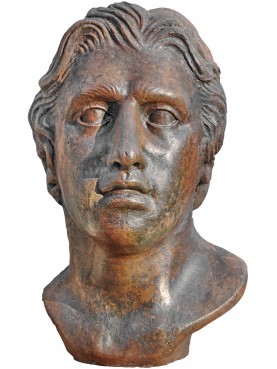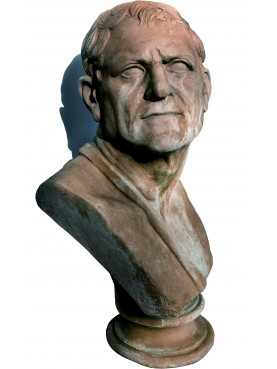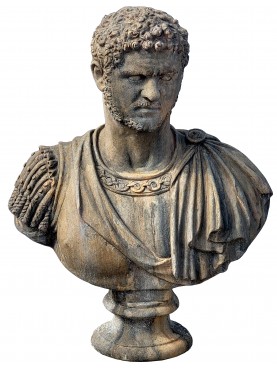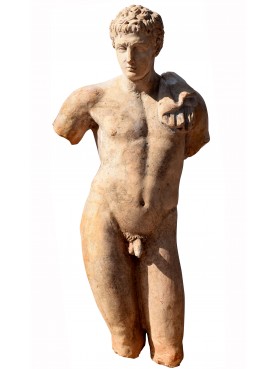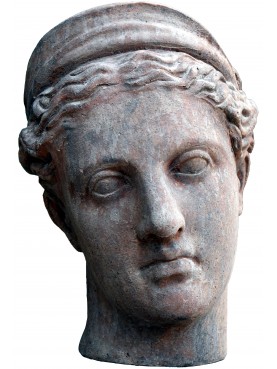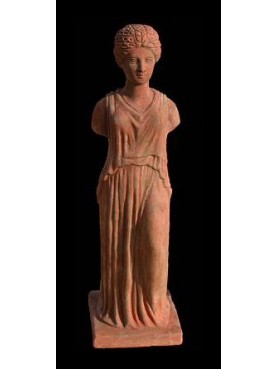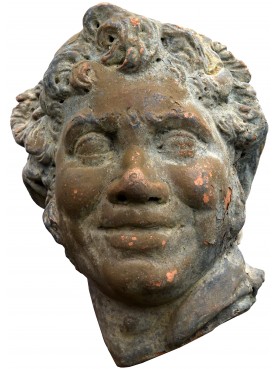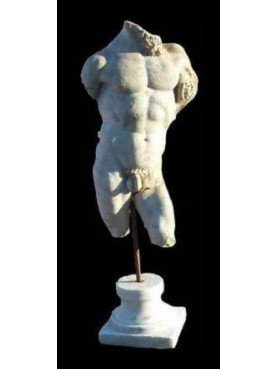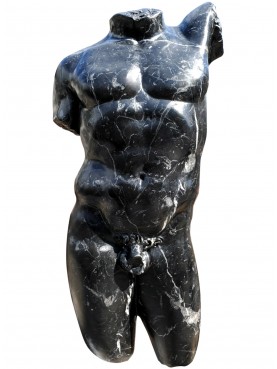Auriga of Delfi terracotta Head with base
Auriga of Delfi terracotta Head with base
Original
1 Available
Data sheet
| Height | 5.91 in | 15 cm |
| Width | 5.91 in | 15 cm |
| Length | 5.91 in | 15 cm |
| Weight | 4.41 lbs | 2 Kg |
| Manufacturing | Recuperando srl | |
| Material | Terracotta | |
| Museum where the Original is exhibited | Archaeological Museum of Delphi |
More info
The Charioteer of Delphi, also known as Heniokhos, is a statue surviving from Ancient Greece, and an example of ancient bronze sculpture. The life-size (1.8m) statue of a chariot driver was found in 1896 at the Sanctuary of Apollo in Delphi. It is now in the Delphi Archaeological Museum.
The statue was set up at Delphi, Greece to commemorate one of two victories of the tyrant Polyzalus of Gela in Sicily and his chariot in the Pythian Games of either 478 or 474 BC, which were held at Delphi in honor of Pythean Apollo. It has also been suggested that the complex was actually commemorating the victory of Polyzalos' brother, Hieron, at the same games in analogy to his ex voto after his victory at the Olympic Games.
It was originally part of a larger group of statuary, including the chariot, at least four horses and possibly two grooms. Some fragments of the horses were found with the statue. The masterpiece has been associated with the sculptor Pythagoras of Samos who lived and worked in Sicily, as well as with the sculptor Calamis. The Sicilian cities were very wealthy compared with most of the cities of mainland Greece and their rulers could afford the most magnificent offerings to the gods, also the best horses and drivers. It is unlikely, however, the statue itself comes from Sicily. The name of the sculptor is unknown, but for stylistic reasons it is believed that the statue was cast in Athens. It has certain similarities of detail to the statue known as the Piraeus Apollo, which is known to be of Athenian origin.
An inscription on the limestone base of the statue shows that it was dedicated by Polyzalus, the tyrant of Gela, a Greek colony in Sicily, as a tribute to Apollo for helping him win the chariot race. The inscription, that is written in hexameters, which is reconstructed to read "Polyzalus dedicated me. ... Make him prosper, honoured Apollo.








